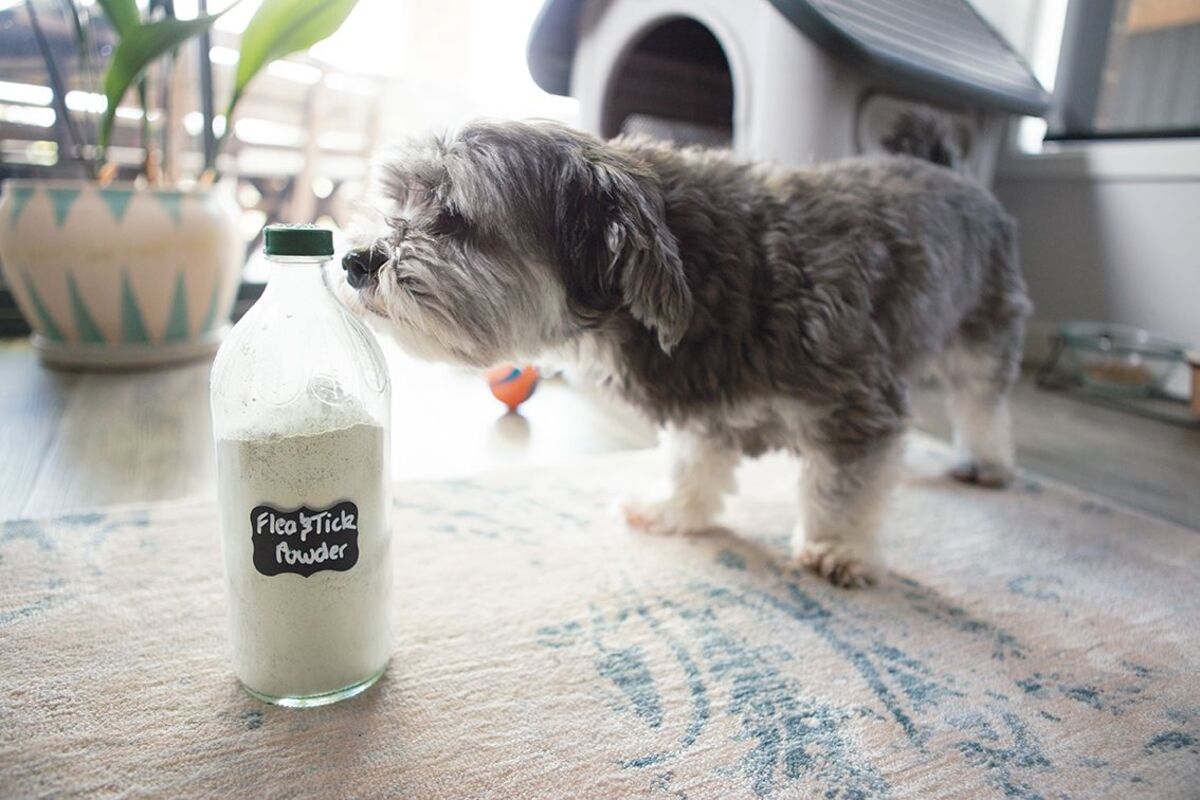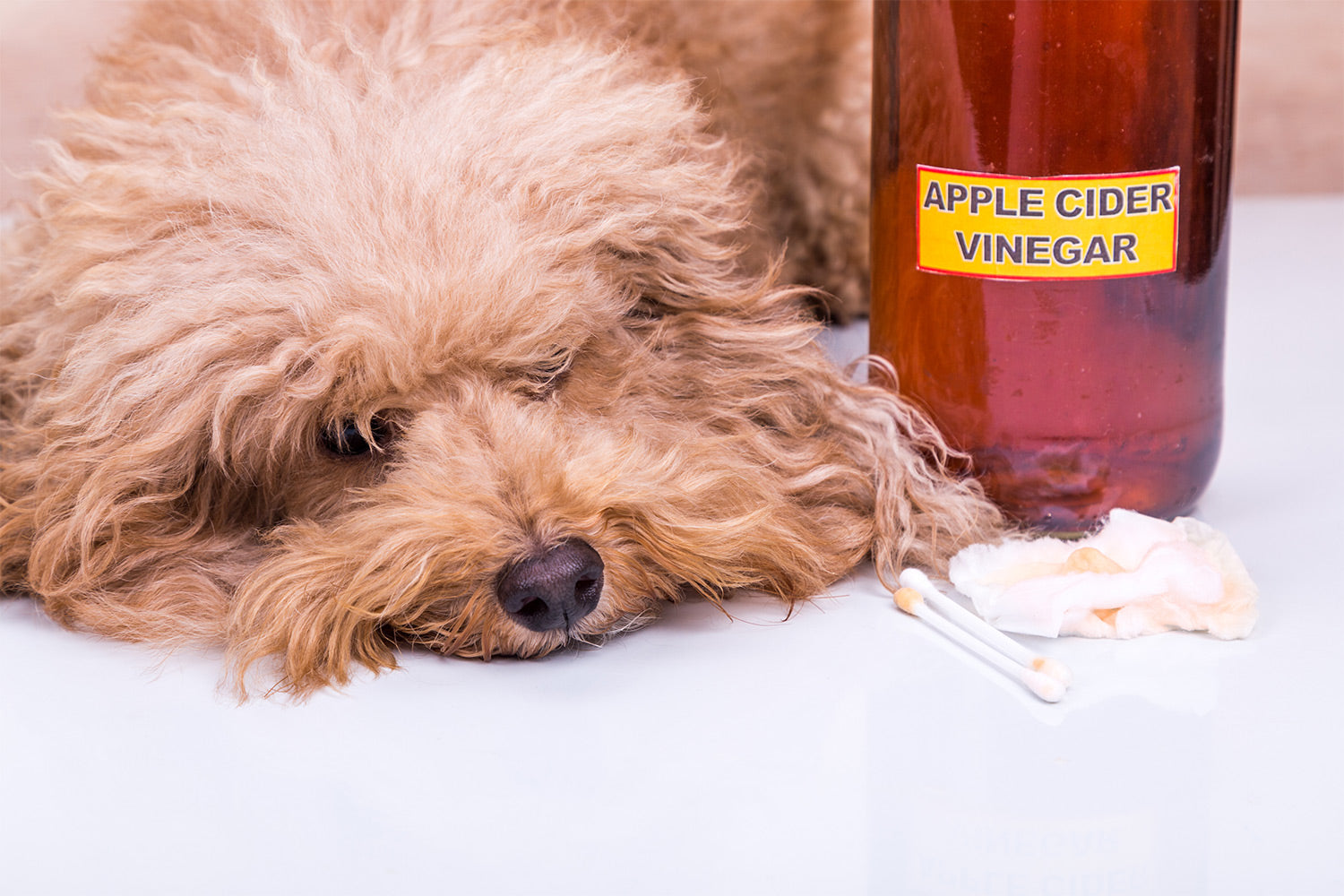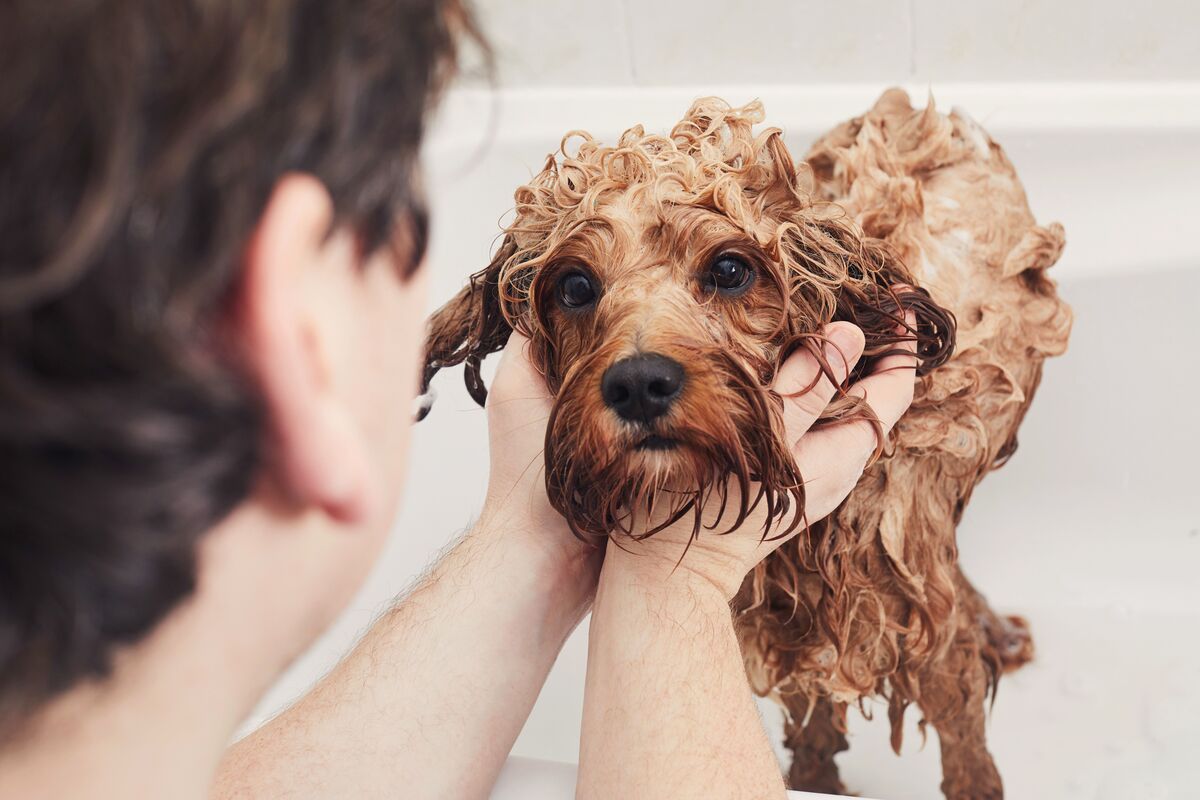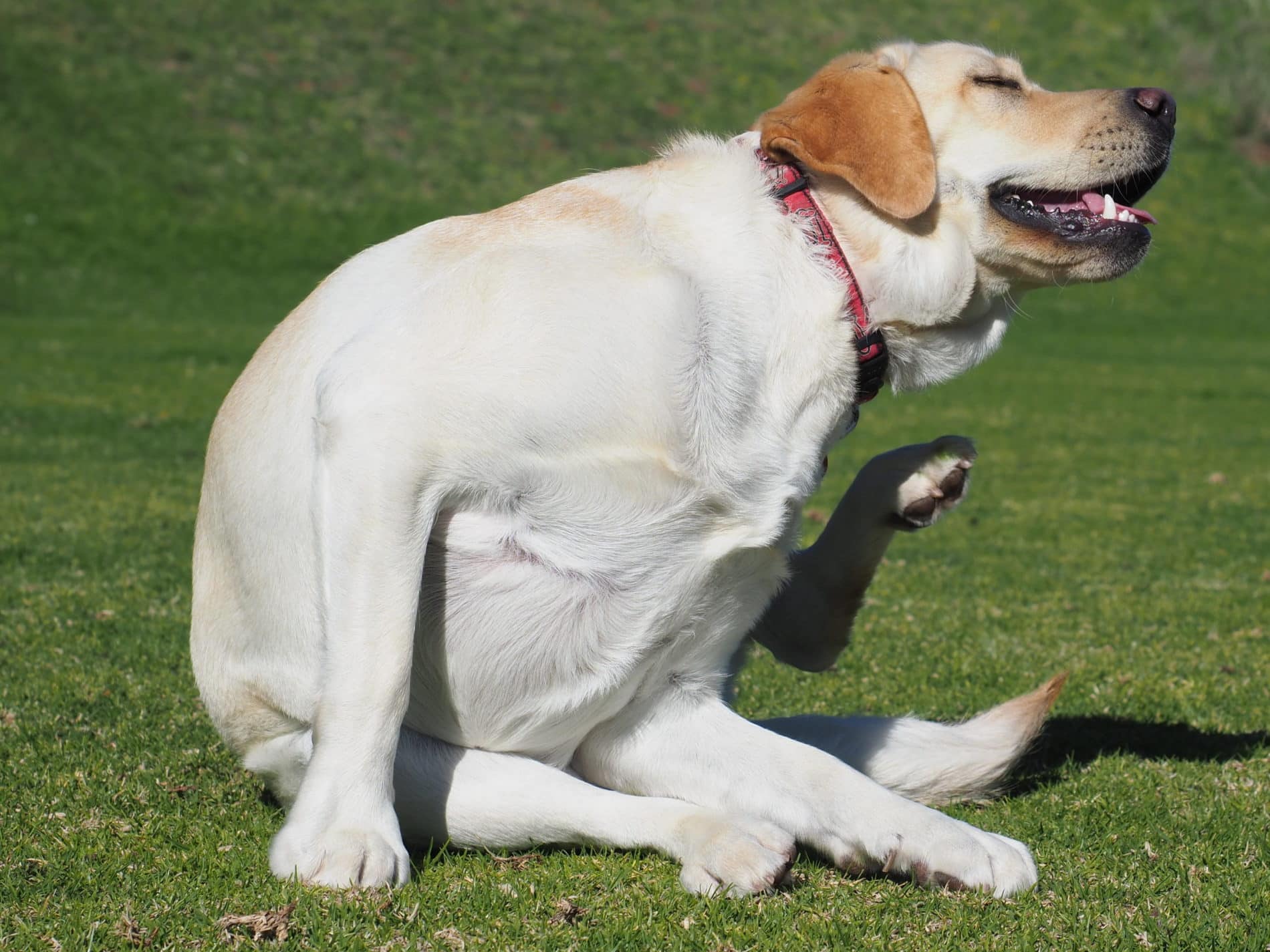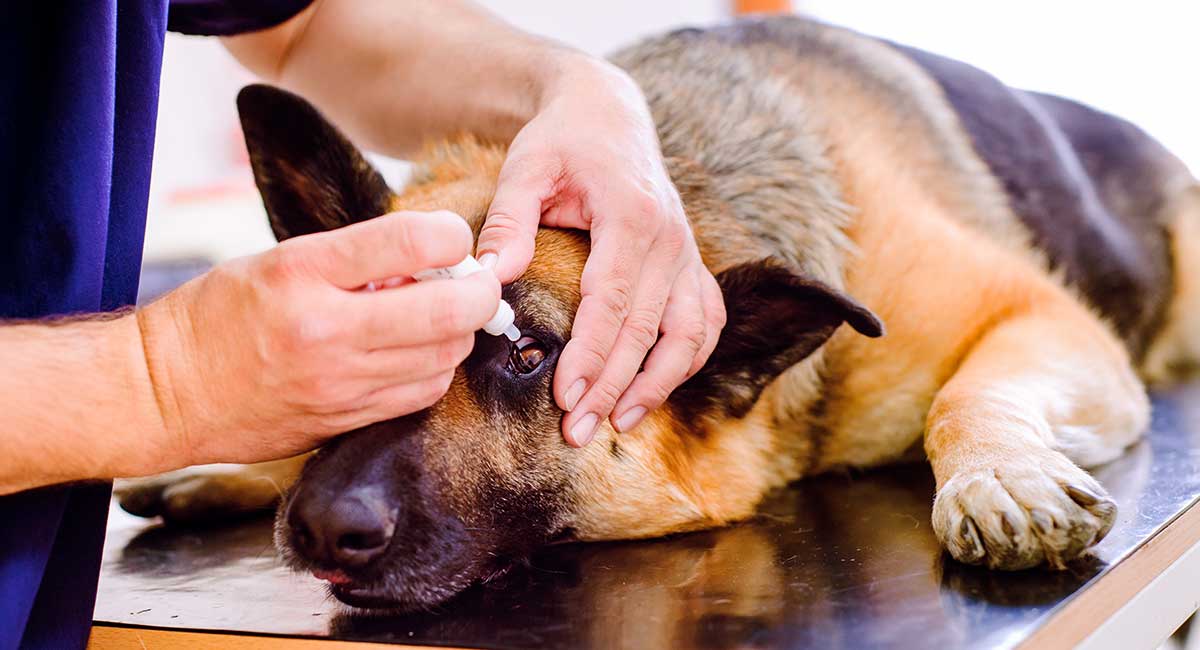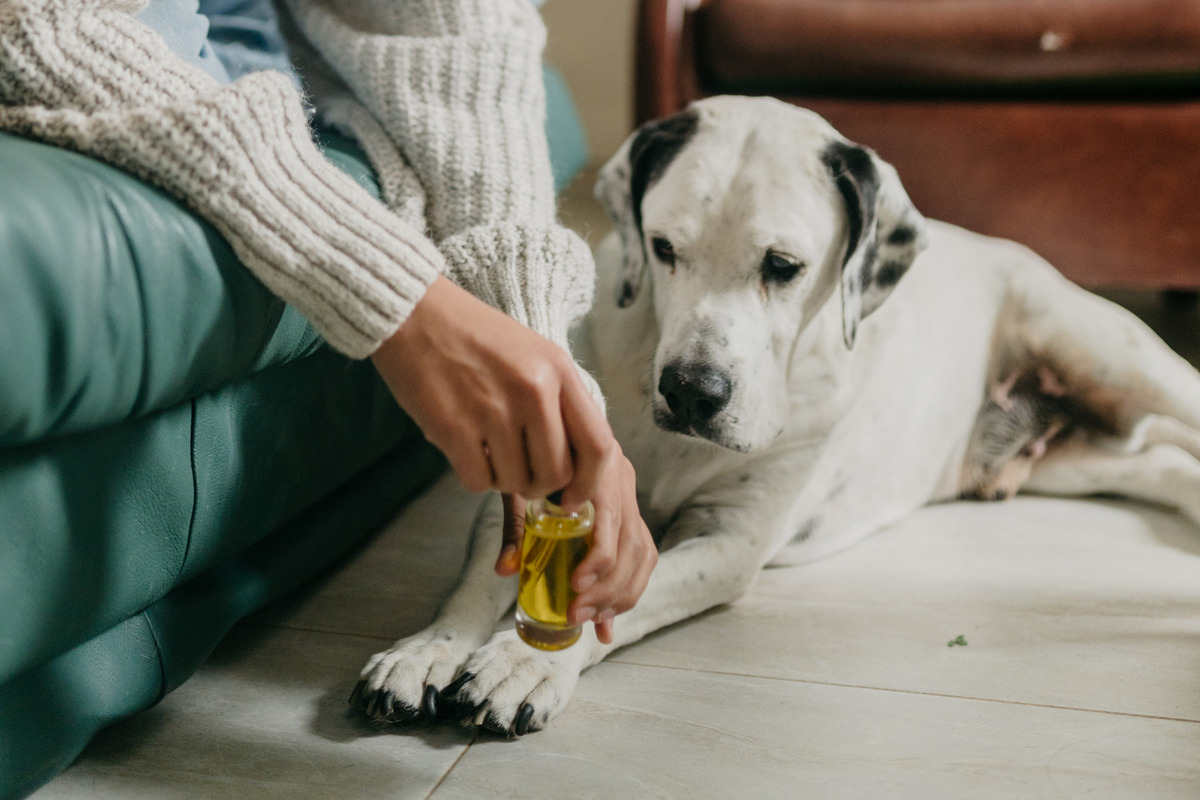Home>Health & Wellness>Common Health Issues>What Can You Use For Fleas On Dogs
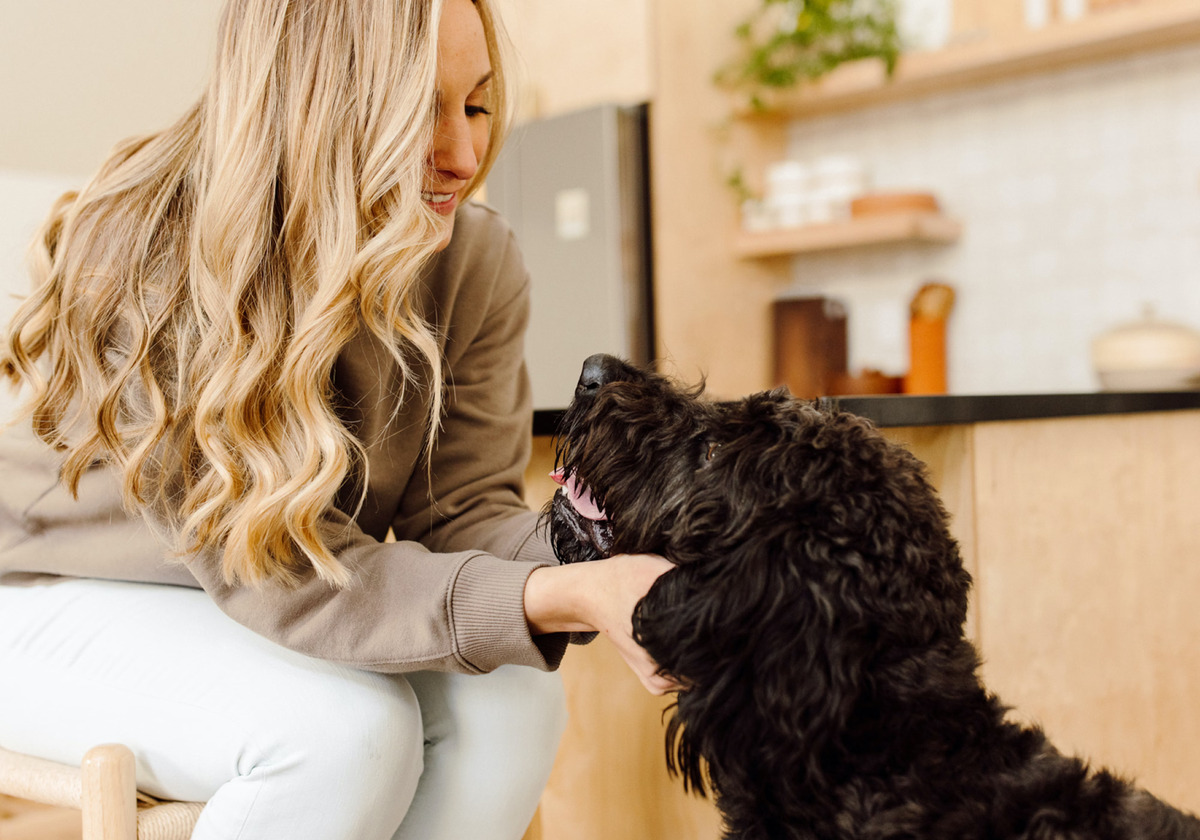

Common Health Issues
What Can You Use For Fleas On Dogs
Modified: February 21, 2024
Looking for effective solutions to combat fleas on dogs? Explore common health issues and discover what you can use for fleas on dogs. Keep your furry friend happy and healthy!
(Many of the links in this article redirect to a specific reviewed product. Your purchase of these products through affiliate links helps to generate commission for Pawsomeoldies.com, at no extra cost. Learn more)
Table of Contents
Introduction
Fleas are a common nuisance for dogs and their owners. These tiny, blood-sucking parasites can cause discomfort, irritation, and even health issues for our beloved canine companions. As a responsible pet owner, it's crucial to be well-informed about the various methods available to combat fleas and keep our furry friends healthy and happy.
In this comprehensive guide, we will explore the different approaches to dealing with fleas on dogs, ranging from natural remedies to chemical treatments. By understanding the options available, you can make informed decisions to effectively manage and prevent flea infestations, ensuring the well-being of your canine companion.
Fleas not only cause itching and discomfort for dogs but can also lead to more serious health problems such as flea allergy dermatitis, anemia, and the transmission of other parasites. Therefore, it's essential to address flea infestations promptly and effectively.
Stay tuned as we delve into the world of flea control, uncovering natural remedies, chemical treatments, and preventive measures to help you combat these pesky parasites and provide your furry friend with the relief they deserve.
Understanding Fleas and Their Impact on Dogs
Fleas are small, wingless parasites that thrive by feeding on the blood of mammals, including dogs. These pesky insects not only cause discomfort for our furry friends but can also lead to various health issues. Understanding the impact of fleas on dogs is crucial for effective flea control and prevention.
Physical Impact
When fleas infest a dog, they cause intense itching and irritation due to their bites. Dogs may scratch, bite, or lick themselves excessively in response to the discomfort caused by flea bites. This can result in hair loss, inflamed skin, and even open sores, making the dog vulnerable to secondary skin infections.
Health Risks
In addition to the physical discomfort, fleas pose significant health risks to dogs. Flea allergy dermatitis, a common allergic skin disease in dogs, is caused by the saliva of fleas and can lead to severe itching, redness, and skin lesions. Furthermore, heavy flea infestations can cause anemia, especially in young or small dogs, due to the loss of blood from multiple flea bites.
Transmission of Diseases
Fleas can also act as vectors for various diseases and parasites. For instance, they can transmit tapeworms to dogs, leading to gastrointestinal issues. Moreover, fleas can carry and transmit pathogens that cause diseases such as bartonellosis (cat scratch fever) and murine typhus, posing a risk to both dogs and their human companions.
Impact on Mental Well-being
The constant itching and discomfort caused by fleas can have a negative impact on a dog's mental well-being. It can lead to restlessness, anxiety, and a decrease in overall quality of life. Additionally, the presence of fleas can disrupt the bond between dogs and their owners, as the constant scratching and discomfort may affect the dog's behavior and temperament.
Understanding the detrimental impact of fleas on dogs underscores the importance of implementing effective flea control measures. By addressing flea infestations promptly and proactively preventing future infestations, pet owners can safeguard their dogs' physical and mental well-being, ensuring they lead happy, healthy lives free from the torment of these persistent parasites.
Natural Remedies for Fleas on Dogs
When it comes to combating fleas on dogs, natural remedies offer a gentle yet effective approach to flea control. These remedies not only help in repelling and eliminating fleas but also minimize the exposure to potentially harmful chemicals. Here are some natural remedies that can aid in managing flea infestations on dogs:
1. Regular Bathing with Essential Oils
Regular baths using essential oils such as lavender, cedarwood, eucalyptus, and lemongrass can help repel fleas. These oils have natural insect-repelling properties and can be diluted in water before being applied to the dog's coat during bathing. Not only do these essential oils help in deterring fleas, but they also leave the dog's coat with a pleasant fragrance.
2. Apple Cider Vinegar Spray
A solution of apple cider vinegar and water can be used as a spray to repel fleas. The acidic nature of apple cider vinegar makes the skin less appealing to fleas, thereby reducing the likelihood of infestation. This solution can be sprayed onto the dog's coat, avoiding the eyes and sensitive areas, to help deter fleas.
Read more: What Can I Use On A Pregnant Dog For Fleas
3. Flea Comb and Lemon Water
Regularly combing the dog's fur with a fine-toothed flea comb can help in physically removing adult fleas and their eggs. Additionally, dipping the comb in a mixture of lemon water while combing can aid in repelling fleas. The natural citrus scent of lemon acts as a deterrent to fleas, making it an effective and non-toxic method of flea control.
4. Diatomaceous Earth
Food-grade diatomaceous earth, composed of fossilized remains of diatoms, can be sprinkled in the dog's living areas to combat fleas. This natural powder works by dehydrating and ultimately killing fleas upon contact. It is important to ensure that the diatomaceous earth is of food-grade quality and to follow safety precautions when applying it around pets.
5. Herbal Flea Collars
Herbal flea collars, infused with natural ingredients such as cedarwood, citronella, and eucalyptus, can serve as a non-toxic alternative to traditional flea collars. These herbal collars emit a scent that repels fleas, providing continuous protection for the dog without the use of synthetic chemicals.
By incorporating these natural remedies into a comprehensive flea control regimen, pet owners can effectively manage flea infestations while minimizing the exposure of their dogs to potentially harmful chemicals. It's important to note that while natural remedies can be beneficial, consulting with a veterinarian is recommended to ensure the safety and suitability of these methods for individual dogs, especially those with pre-existing health conditions or sensitivities.
Chemical Treatments for Fleas on Dogs
Chemical treatments for fleas on dogs encompass a range of products designed to effectively eliminate fleas and prevent reinfestation. These treatments often contain synthetic compounds specifically formulated to target fleas while ensuring the safety of dogs when used according to the manufacturer's instructions. It's important to note that consulting with a veterinarian before using chemical treatments is advisable, especially for dogs with pre-existing health conditions or those on other medications.
Read more: What Can You Feed A Dog To Help With Fleas
1. Topical Spot-on Treatments
Topical spot-on treatments are among the most commonly used chemical flea control products for dogs. These treatments typically come in the form of liquid solutions that are applied directly to the dog's skin, usually between the shoulder blades or at the base of the neck. The active ingredients in these spot-on treatments target adult fleas, disrupting their life cycle and preventing reinfestation. Additionally, some spot-on treatments offer protection against ticks and other parasites, providing comprehensive pest control for dogs.
2. Oral Flea Medications
Oral flea medications are administered to dogs in the form of flavored chewable tablets or soft chews. These medications contain insecticides that are absorbed into the dog's bloodstream, effectively targeting fleas when they bite the dog. Oral flea medications are known for their convenience and efficacy, offering a systemic approach to flea control. Some oral flea medications also provide protection against other parasites, making them a popular choice for pet owners seeking comprehensive pest prevention for their dogs.
3. Flea Collars
Flea collars are another chemical treatment option for controlling fleas on dogs. These collars are infused with active ingredients that repel and kill fleas upon contact. When worn by the dog, the flea collar releases the active compounds, creating a protective barrier against fleas. Flea collars are designed to provide continuous protection, making them a convenient and long-lasting solution for flea control. It's essential to ensure that the flea collar fits properly and does not cause any discomfort to the dog.
4. Flea Shampoos and Dips
Flea shampoos and dips contain chemical formulations designed to kill fleas on contact and provide temporary relief from infestations. These products are used during bathing and are effective in reducing the number of adult fleas on the dog's coat. While flea shampoos and dips offer immediate results, they may not provide long-term protection against reinfestation and are often used in conjunction with other chemical or natural flea control methods.
Read more: What Can You Spray On A Dog To Kill Fleas
5. Environmental Treatments
In addition to directly treating the dog, chemical flea control extends to environmental treatments aimed at eliminating fleas in the dog's living spaces. This may involve using insecticidal sprays, foggers, or powders designed to target fleas in the home environment. By addressing fleas at every stage of their life cycle in the surrounding environment, pet owners can effectively break the flea life cycle and prevent reinfestation.
When using chemical treatments for fleas on dogs, it's crucial to follow the usage instructions provided by the product manufacturers and to be mindful of any potential side effects. Additionally, regular monitoring for signs of sensitivity or adverse reactions is important when introducing new chemical flea control products to dogs. By incorporating these chemical treatments into a comprehensive flea control regimen, pet owners can effectively combat flea infestations and provide their dogs with a comfortable, pest-free environment.
Preventing Fleas on Dogs
Preventing fleas on dogs is a proactive approach that focuses on minimizing the risk of flea infestations and maintaining a pest-free environment for our canine companions. By implementing preventive measures, pet owners can significantly reduce the likelihood of flea infestations and safeguard their dogs' well-being. Here are some effective strategies for preventing fleas on dogs:
-
Regular Grooming: Establishing a routine grooming schedule for dogs is essential in preventing flea infestations. Regular brushing and combing not only help in removing loose fur and debris but also enable early detection of fleas or flea dirt. Additionally, maintaining a clean and well-groomed coat can deter fleas from taking up residence on the dog.
-
Environmental Maintenance: Keeping the dog's living spaces clean and well-maintained is crucial for flea prevention. Vacuuming carpets, upholstery, and pet bedding regularly can help in removing flea eggs, larvae, and pupae from the environment. Washing the dog's bedding in hot water and using pet-safe household cleaners can further aid in eliminating flea habitats.
-
Yard Maintenance: Maintaining a well-kept yard can contribute to flea prevention. Regularly mowing the lawn, trimming shrubbery, and removing debris can reduce outdoor flea habitats. Additionally, considering pet-safe outdoor pest control measures can help in minimizing the presence of fleas in the yard.
-
Regular Veterinary Care: Scheduling regular veterinary check-ups for dogs is important for maintaining their overall health and preventing flea infestations. Veterinarians can provide guidance on flea prevention products, conduct flea screenings, and recommend appropriate preventive measures based on the dog's lifestyle and environmental factors.
-
Use of Preventive Products: Utilizing flea preventive products, such as spot-on treatments, oral medications, and flea collars, can offer long-term protection against fleas. These products are designed to disrupt the flea life cycle, repel fleas, and prevent infestations. It's important to consult with a veterinarian to select the most suitable preventive products for the dog.
-
Regular Monitoring: Observing the dog for signs of flea infestations, such as excessive scratching, biting, or visible flea dirt, is crucial for early detection. Promptly addressing any signs of fleas can prevent infestations from escalating and minimize the discomfort experienced by the dog.
By incorporating these preventive strategies into a comprehensive flea control regimen, pet owners can create an environment that is less conducive to flea infestations, thereby promoting the well-being and comfort of their dogs. Consistency and diligence in implementing preventive measures are key to effectively preventing fleas on dogs and ensuring a flea-free living environment for our beloved canine companions.
Conclusion
In conclusion, addressing flea infestations and preventing future occurrences is essential for maintaining the health and well-being of our canine companions. Fleas not only cause discomfort and irritation for dogs but also pose significant health risks and can impact their mental well-being. By understanding the impact of fleas on dogs and exploring the various methods of flea control, pet owners can take proactive steps to ensure their dogs lead happy, healthy lives free from the torment of these persistent parasites.
From natural remedies to chemical treatments and preventive measures, there are diverse options available for managing fleas on dogs. Natural remedies, such as essential oil baths, apple cider vinegar sprays, and herbal flea collars, offer a gentle yet effective approach to flea control, minimizing the exposure to potentially harmful chemicals. These natural methods not only help in repelling and eliminating fleas but also contribute to a safer and more natural approach to pest management.
On the other hand, chemical treatments, including topical spot-on treatments, oral medications, and flea collars, provide targeted and systemic solutions for eliminating fleas and preventing reinfestation. When used according to the manufacturer's instructions and with guidance from a veterinarian, these chemical treatments can offer comprehensive pest control for dogs, addressing both adult fleas and their life stages in the environment.
Furthermore, preventive measures play a crucial role in minimizing the risk of flea infestations and maintaining a pest-free environment for dogs. Regular grooming, environmental maintenance, yard upkeep, and the use of preventive products are integral components of a holistic flea prevention strategy, contributing to a healthier and more comfortable living environment for dogs.
By integrating natural remedies, chemical treatments, and preventive measures into a comprehensive flea control regimen, pet owners can effectively manage flea infestations and create an environment that is less conducive to flea proliferation. Consistency, diligence, and regular veterinary care are key in ensuring the long-term well-being of dogs and preventing the detrimental effects of flea infestations.
In essence, by staying informed about flea control methods and taking proactive steps to address and prevent flea infestations, pet owners can provide their dogs with a comfortable, pest-free environment, allowing them to thrive and enjoy a life free from the burden of these persistent parasites.

